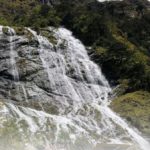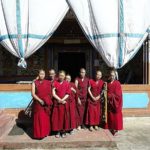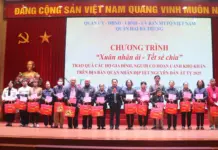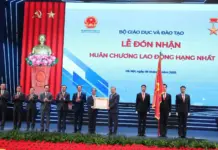 |
When it comes to traveling in the Northeast, the journey is often plagued by treacherous roads, incessant rain, and challenging mountainous terrain. Nevertheless, Mechukha is a hidden gem that beckons travelers to seize the moment and embark on an unforgettable adventure, even when the rain threatens to pour relentlessly. Despite the weather forecast predicting a 90% chance of rain during our visit to the far-flung corners of Arunachal Pradesh, the opportunity to explore this valley near the McMohan Line was too enticing to pass up. Instead of opting for a quick helicopter ride, which would have whisked us away within hours, we chose the winding two-day road trip. Little did we know that this decision would transform the journey into an enchanting experience, turning the road itself into a captivating destination.
Our expedition commenced on a damp morning as we departed from Dibrugarh, traversing the swollen Brahmaputra River. The newer and shorter Basar route, although incomplete, tantalized us with the promise of a faster journey. However, we were compelled to take the Pasighat route due to its accessibility. Arunachal Pradesh’s roads vary from shiny, new blacktops to slushy dirt tracks, leaving little in-between. As we traveled amidst the river and the hills, shrouded in low-lying clouds, we encountered vibrant idols strewn near a stream—a silent reminder of past festivals. Despite an aura of abandonment, these statues appeared strangely at home in their surroundings. Ascending misty slopes after Pasighat, we discovered the Brahmaputra, known as the Siang here, meandering alongside us—a regular river descending from the mountains instead of reaching the sea in the Assam plains. Orange orchards blanketed the hillsides, devoid of the small, sweet, and juicy fruits that are typically sold in cane baskets at local markets during the season. Amidst a grove, giant black and pink pigs unearthed roots with fervor. Eventually, we parted ways with the Siang and followed the Siyom River through narrower valleys. The dark tropical forest, with its multi-tiered structure, was adorned with towering coral trees in full bloom, casting a smattering of red across the jungle’s canopy.
As we journeyed onward, we reached the bottom of a narrow valley, which gradually opened up to reveal a bean-shaped bowl adorned with a shallow and pebbly Siyom River, creating picturesque islands. Nestled on one side of this scenic landscape lay the town of Aalo, also known as Along, where we decided to spend the night. As the largest settlement in the region, Aalo offered a range of culinary delights, including Korean cuisine. While observing men wading through the rain in the middle of the river, likely engaged in fishing, we enjoyed the view from our guest house—a dry rivulet accompanied by a couple of ruminating Mithuns. In a narrow and fast-flowing channel, a man expertly maneuvered his long wooden canoe upstream, opting for the path of least resistance.
En route to our destination, we encountered villages adorned with traditional thatched bamboo houses perched on stilts, their size dictated by the topography of the land. Inviting wide verandas lined with benches integrated into bamboo railings beckoned us to rest and revel in the tranquility. One such picturesque village, Kaying, nestled amidst terraced fields, was in the process of being prepared for the transplantation of vibrant green rice shoots. White flags, stained with a red sun, fluttered atop certain houses, symbolizing followers of the indigenous Donyi Polo religion, which venerates the sun and the moon. Occasionally, we passed by churches and memorials adorned with figurines, gracefully positioned along steep slopes. These slopes hosted tiny huts perched high in the air on long stilts, while pigs and ducks casually waddled on the roadside’s edge. Our driver, Rashid, exhibited extra caution, emphasizing the need to avoid any collisions, as running over an animal would require compensation equivalent to the potential loss of multiple future generations. The argumentative Indian within pondered, “How could one determine if the animal wouldn’t have been part of a future family meal?”
Our journey continued through dense evergreen forests, occasionally encountering groves of untamed pineapples and bananas growing freely. The trunks of banana trees glistened like polished mahogany pillars, adding to the ethereal beauty of the surroundings. Unexpectedly, we stumbled upon a grand feast, attracting a large congregation of locals. Men, with dahs slung across their shoulders, filled the gathering. Adjacent to the road, at the renowned Siko Dido waterfall, whose cascading waters created a misty spectacle, a grocery store proudly displayed a dried beehive hanging outside, resembling a Chinese lantern. To our amazement, a young girl strolled along, dragging a suitcase-sized speaker, energetically serenading the surroundings with peppy songs—an absolutely surreal moment. As the road looped towards Tato village, situated on a shoulder with a commanding view of two valleys, we reflected on the historical significance of the location. During the 1962 war, the Chinese had nearly reached this junction. Presently, ongoing road construction had left no trace of a road in this area and beyond. Within this context, we encountered women wearing bright lipsticks and gumboots, actively engaged in the road-building efforts. Departing from the Siyom River, we followed the path alongside the Yargyup Chhu, flowing at the valley’s base. The evergreen forests gradually surrendered to rocky mountainsides, concealing whispering waterfalls and trumpet trees adorned with taffy pink blossoms. The melodious twittering of tiny birds filled the air, interrupted abruptly as we approached, as if someone had pressed a mute button. Against the ashy grey sky, crimson red and large white rhododendrons stood out, while ponies emerged from thickets of towering bamboo to graze peacefully on the hillside.
After enduring a bone-rattling dirt track for several hours, the road finally curved, revealing an open golden expanse cradled by gentle hills, with the higher reaches veiled by low-hanging clouds. Within this captivating valley lay a small town, accompanied by scattered technicolor houses, a smattering of conifers, and the meandering silver-grey Yargyup Chhu, unhurriedly flowing through the landscape. Grazing ponies, adorned with shaggy manes, and prayer flags dancing in the wind completed the picturesque tableau of Mechukha. Aptly named the “medicinal water of snow” in the local Memba language, Mechukha’s invigorating atmosphere and breathtaking vistas provided a soothing balm for weary travelers.
Legend of the Chumi Gyatse: A Deeper Understanding of Arunachal’s Famous 108 Holy Waterfalls
Nestled far away in India’s land of the rising sun, a tiny hamlet called Tsechu (meaning hot water) located barely 250 meters from the India-China border in the Tawang district of Arunachal Pradesh has been in the news of late for its natural splendour and Buddhist folklore making it a much sought after “Shangrila” for people from across the country and from overseas. The place began a unique event called the ‘Shangrila Calling’ Festival in 2021 to spread the stories, folklore and culture associated with the spell-binding Chumi Gyatse or the “Holy Waterfalls” to the outside world.
Preserving the Dharma: The Encouraging Tale of Buddhist Nuns in North East India
For centuries, Buddhism has played an important role in the culture and religious beliefs of North East India. However, female involvement in Buddhist practice has been largely limited due to entrenched patriarchal social structures and religious institutions. This has been the case since the time of the Buddha himself, illustrating the complex and rich history of Buddhism in the region.





